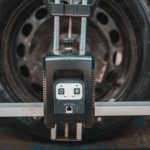1. Research Your Car’s Value
Before trading in your car, it’s crucial to know how much it’s worth. Getting an accurate estimate helps you negotiate a better deal and avoid accepting a lowball offer. The best way to determine your car’s market value is by checking multiple pricing sources and comparing offers.
Use Pricing Guides
Several online tools can give you an estimate of your car’s value based on factors like mileage, condition, and location. One of the most trusted sources is Kelley Blue Book (KBB), which provides a trade-in value, private party value, and dealer retail price.
| Pricing Guide | Website |
|---|---|
| Kelley Blue Book | kbb.com |
| Edmunds | edmunds.com |
| NADA Guides | nadaguides.com |
Compare Dealer and Online Offers
Different dealers and online car buyers may offer varying amounts for your trade-in. Some dealerships provide instant trade-in estimates, while online buyers like Carvana, Vroom, and CarMax offer cash offers based on vehicle details.
Tips for Comparing Offers
- Get quotes from at least three dealerships.
- Check online car buyers for potential better offers.
- Factor in convenience—some online buyers offer home pickup.
Pro Tip
To get the best value, be honest about your car’s condition when entering details on pricing guides or online buyer sites. Overestimating its condition may lead to a lower final offer.
2. Fix Minor Repairs and Clean Thoroughly
Before trading in your car, take some time to address minor repairs and give it a thorough cleaning. A well-maintained and clean vehicle looks more appealing to dealerships and can help you secure a higher trade-in offer.
Address Small Repairs
Fixing small issues can make a big difference in how much your car is worth. Dealerships consider the condition of your vehicle when determining its value, so taking care of minor problems can prevent them from lowering their offer.
Common Minor Repairs to Fix
| Issue | Recommended Fix |
|---|---|
| Scratches and Paint Chips | Use touch-up paint or scratch remover to improve appearance. |
| Worn Tires | If tires are excessively worn, consider replacing them with affordable new ones. |
| Burnt-Out Lights | Replace any broken or dim headlights, brake lights, or turn signals. |
| Cracked Windshield | Fix small cracks with a repair kit or replace the windshield if necessary. |
| Brake Issues | Check brake pads and rotors, and replace them if needed. |
Get a Professional Cleaning or Detailing
A clean car not only looks better, but it also gives the impression that it has been well taken care of. Having your car professionally cleaned or detailed can help enhance its value.
Cleaning Tips
- Vacuum the interior, including seats, carpets, and mats.
- Clean and condition leather or fabric seats.
- Wash and wax the exterior to restore shine.
- Remove personal items and trash from the vehicle.
- Wipe down the dashboard, doors, and console for a polished look.
Taking these steps before going to the dealership can improve your trade-in value and help you get the best possible offer.
![]()
3. Gather Important Documents
Having the right paperwork ready can make your trade-in process smoother and help you get a better offer. The dealership wants to see proof that your car has been well taken care of, so gathering essential documents is a crucial step.
Prepare Your Car Title
The car title is the most important document when trading in a vehicle. It proves that you are the legal owner and have the right to sell it. If you still owe money on your car loan, check with your lender on how to handle the title transfer.
Keep Maintenance Records
A well-maintained car typically gets a higher trade-in value. Having a record of oil changes, tire rotations, and other routine maintenance shows that you have taken good care of the vehicle. If you don’t have all the records, you can check with your repair shop or dealership for copies.
Include Any Warranties
If your vehicle is still under manufacturer warranty or you purchased an extended warranty, be sure to include this information. A car with an active warranty can be more appealing to the dealership and may increase your offer.
Checklist of Important Documents
| Document | Why Its Important |
|---|---|
| Car Title | Proves ownership and allows a smooth transfer |
| Maintenance Records | Shows the car has been well cared for |
| Warranty Information | Increases desirability and value |
Final Thoughts on Gathering Documents
Taking the time to organize these documents before visiting a dealership can make negotiations easier and help you get the most money for your trade-in. The more proof you have of your car’s good condition, the better your chances of getting a strong offer.
4. Get Multiple Trade-In Offers
Dont settle for the first offer you get. Visiting multiple dealerships, checking online retailers, and exploring instant cash offers can help you compare deals and get the best price for your trade-in.
Visit Different Dealerships
Different dealerships may offer different trade-in values based on their current inventory and demand. Its a good idea to visit at least three dealerships to see who provides the best offer.
Check Online Retailers
Online car-buying platforms like Carvana, Vroom, and CarMax offer instant trade-in quotes. These can give you a solid baseline to compare against dealership offers.
Popular Online Trade-In Options
| Platform | Key Benefits |
|---|---|
| Carvana | Instant online quote, free pickup |
| Vroom | Competitive offers, convenient process |
| CarMax | In-person or online appraisal, no-haggle pricing |
Consider Instant Cash Offers
Some services, like Kelley Blue Book Instant Cash Offer, allow you to get a quick offer that you can redeem at participating dealerships. This can be a great tool for negotiating a better price.
Use Offers to Negotiate
Once you’ve collected multiple offers, use them as leverage. Show dealerships the best offers you’ve received and ask if they can beat or match them. This strategy often helps maximize your trade-in value.
5. Negotiate Separately from a New Car Purchase
Keep your trade-in negotiations separate from the new car purchase to ensure you get the best deal for both without unnecessary pressure.
Why Separate the Negotiations?
Dealerships often bundle your trade-in value and the price of the new car into a single negotiation, which can make it harder to see the true value of each part of the deal. By negotiating separately, you can maximize the amount you get for your trade-in and secure a better price for your new car.
How to Keep the Deals Separate
- Get Trade-In Offers First: Before even discussing a new car, ask for the trade-in value separately. This helps you understand how much your vehicle is worth.
- Research Trade-In Value: Use online tools like Kelley Blue Book or Edmunds to get an estimated value for your trade-in.
- Don’t Mention a Trade-In Right Away: Start negotiations on the new car without bringing up your trade-in. Once you settle on a price for the new car, then discuss the trade-in.
Benefits of Separate Negotiations
| Benefit | Why It Matters |
|---|---|
| Transparency | You can clearly see the trade-in value without it being adjusted to offset the new car price. |
| Better Control | It allows you to focus on getting the best deal for each part of the transaction individually. |
| Potential for Higher Trade-In Offer | Some dealerships may try to lowball your trade-in if they know they are making up for it elsewhere in the deal. |
Final Tips
- Shop Your Trade-In Around: Get valuation quotes from multiple dealers before settling.
- Be Ready to Walk Away: If the dealership won’t separate the negotiations, consider selling your car elsewhere.
By keeping your trade-in and new car negotiations separate, you can ensure that you’re getting the best value for both transactions without hidden adjustments or pressure.


